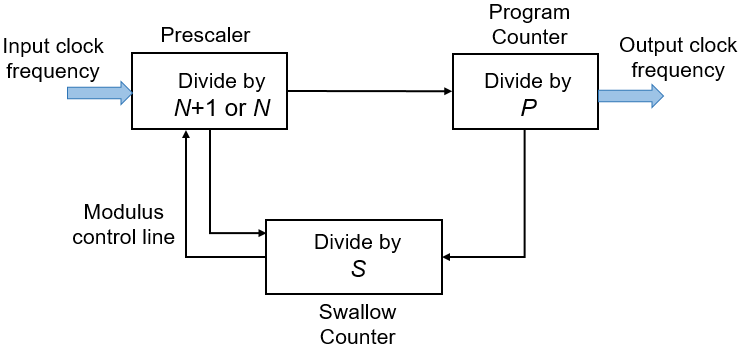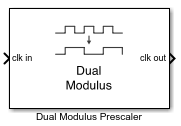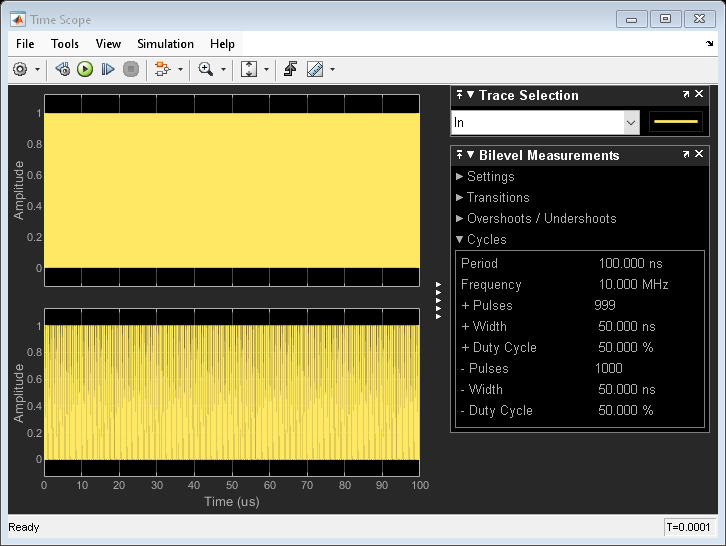Dual Modulus Prescaler
Integer clock divider with two divider ratios
Libraries:
Mixed-Signal Blockset /
PLL /
Building Blocks
Description
The Dual Modulus Prescaler subsystem block consists of a program counter, a swallow counter and a prescaler.

When the block first receives an input signal, the pulse swallow function is activated. The prescaler divides the input signal frequency by (N+1), where N is defined by the Prescaler divider value (N) parameter. Both the program and swallow counters start counting. The swallow counter resets after counting to S pulses, or (N+1)S cycles, where S is defined by the Swallow counter value (S) parameter. Then, the pulse swallow function is deactivated, and the prescaler divides the input frequency by N.
Since the program counter has already sensed S pulses, it requires (P-S) more pulses, or (P-S)N cycles to reach overflow, where P is defined by the Program counter value (P) parameter. The cycle repeats after both counters are reset.
The effective divider value of the dual modulus prescaler is the ratio of the input frequency to the output frequency:
Note
To prevent the program counter and prescaler from resetting prematurely before the swallow counter finishes counting, the condition must be met.
The dual modulus prescaler is also known as pulse swallow divider.
Examples
Ports
Input
Output
Parameters
More About
References
[1] Razavi, Behzad. RF Microelectronics. Upper Saddle River, NJ: Prentice Hall PTR, 1998.
Version History
Introduced in R2019a


